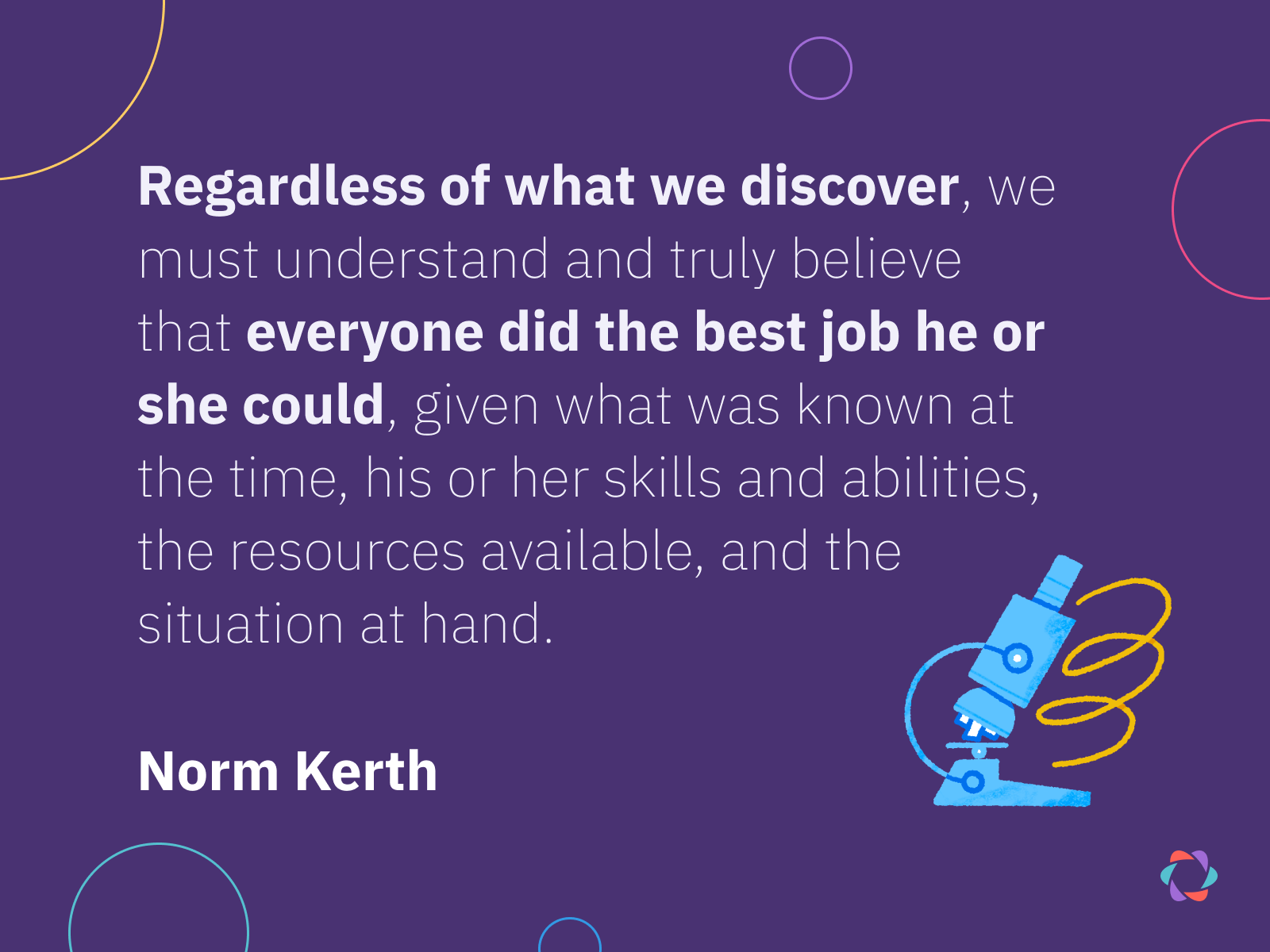What is the Retrospective Prime Directive?

The Prime Directive is like the Golden Rule for agile retrospectives. The Golden Rule poses a guideline for impeccable behavior: “Do unto others as you would have them do unto you.” This simple statement leads to a safe and harmonious life in a community, assuming everyone follows this rule and is of sound character.
The Prime Directive takes that principle and boils it down into a meeting mantra that improves sprint retrospective meetings for all team members.
What is the retrospective Prime Directive?
The Prime Directive is a simple statement to start sprint retrospectives with.
Norm Kerth, who wrote the first book on project retrospectives, came up with the phrase. However, it originates in Star Trek!
In Kerth’s book Project Retrospectives: a handbook for team reviews, the Prime Directive states:
Regardless of what we discover, we must understand and truly believe that everyone did the best job he or she could, given what was known at the time, his or her skills and abilities, the resources available, and the situation at hand.
The meeting facilitator – like a Scrum Master or Agile coach – is meant to read Kerth’s mantra aloud at the start of a retro. The Prime Directive is intended to create a psychologically safe space for team members to share openly, without blame, or undue interpersonal risk.
The Prime Directive gets you in the right mindset for a retrospective
Effective retrospectives help teams achieve continuous improvement by creating learnings from the past to improve the future. This process inevitably involves sharing mistakes, failures, and other sensitive topics. If we only shared what went well, retrospectives would be pretty much useless.
The big challenge with retrospectives is helping team members feel safe to speak up about what didn’t go well. When teams lack psychological safety, the event can easily turn into an ineffective blame game. The Prime Directive aims to prevent that happening.
Most people are quick to question others’ intentions and efforts, while ours are always sincere and strong.

The Prime Directive prevents that from happening by setting a positive tone for the meeting and creating a psychologically safe space.
As Kerth writes in his book:
The Prime Directive “reflects a mindset that needs to be part of everything that happens before, during, and after a retrospective ritual.”
The Prime Directive reminds us that everyone has good intentions and gives the best effort within their abilities.
A retrospective meeting becomes safe and productive when all attendees share this belief.
People can then raise and discuss topics without worrying they’ll get attacked or questioned. The event’s focus is on the issues at hand, not the people present.
Feeling safe means participants feel comfortable admitting mistakes and discussing better ways of handling something in the future. Such psychological safety only emerges when the Prime Directive applies not just during but also before and after the event.
Say I admit to a mistake but then have that held against me during a performance review. In that case, I’ll not feel safe during any future retrospectives.
Keeping team retrospectives safe requires vigilance
In the heat of a retrospective, you may quickly forget the mantra you read out when starting. All participants are responsible for maintaining the spirit of the Prime Directive throughout the meeting, and the facilitator especially so.
Some agile teams choose to write the Prime Directive out in a place that’s visible throughout the retrospective. That way, you can reference the mantra when a discussion turns personal instead of productive.
Another approach is to rephrase it so you can use and repeat it throughout the meeting. Kerth, for example, reframes the statement when he receives feedback or shares a lesson learned:
“I did the best job I could, given what I knew at the time, and I hope I learned from this experience.”
Get creative with the Prime Directive
It’s “Kerth’s Prime Directive” in his book, so why not make an “<insert name> Prime Directive” for your team’s retrospectives or even other Agile or Scrum meetings?
Say you’re on a globally distributed team – like we are! In that case, you can expand it with a sentence that fosters inclusion:
“We have team members from four continents and ten countries. Make sure everyone gets a chance to share their unique view, and remember that common sense for you might be nonsense to someone else.”
You may also want to be explicit in your Prime Directive that you use the Las Vegas rule:
“What happens in the retrospective, stays in the retrospective.”
You can also make mantras for different events, like Sprint Planning:
“We should select the tasks that create the most value, not the most output. And remember, if you don’t have a Sprint Goal, you might not get there.”
When to use the Prime Directive
The Prime Directive is an extra tool to add to your Agile toolbox.
You don’t necessarily need to use it in every retrospective, but it’s a useful reminder that can set your retro on the right path.
If you’re a new team starting out with agile ways of working, you might want to keep using it for your first few sprints. If you’ve never done one before, a retrospective can be scary.
There’s scope for participants to feel vulnerable, threatened, and criticised. The Prime Directive can help prevent negative feelings and amplify feelings of team accountability and togetherness.
Get creative with your team and let us know what Prime Directives you create – we’d love to hear what types of prime directives of mantras your team uses!









